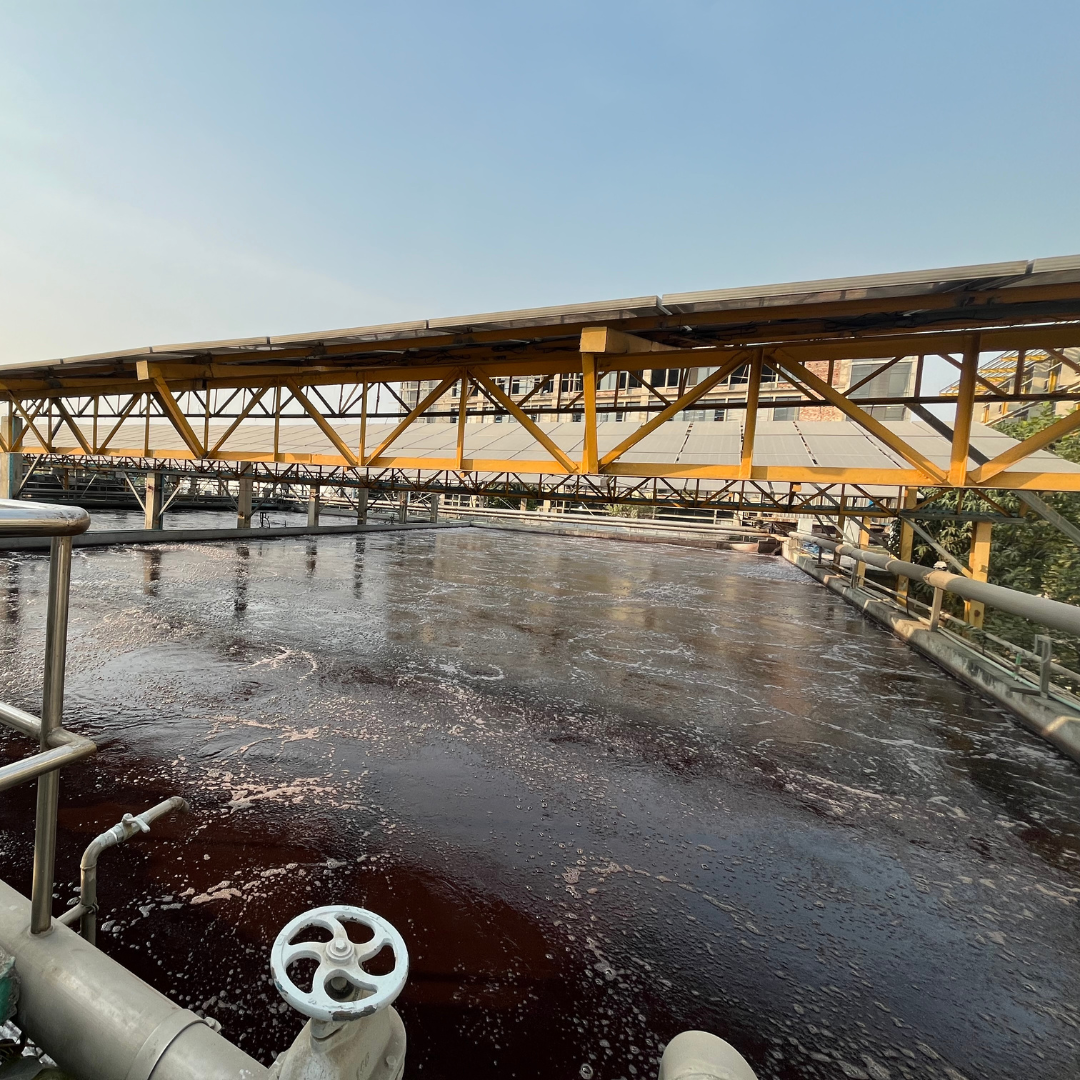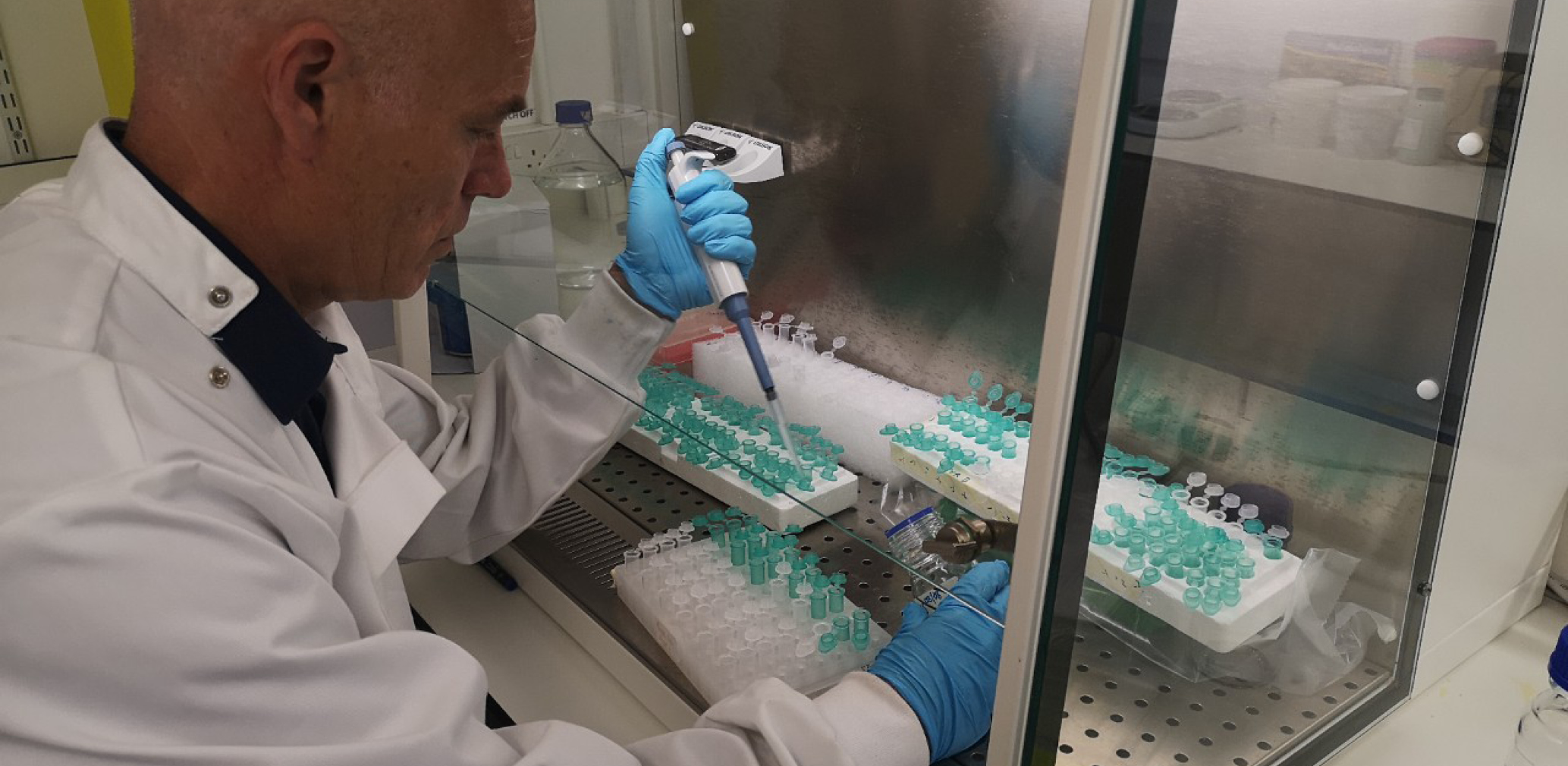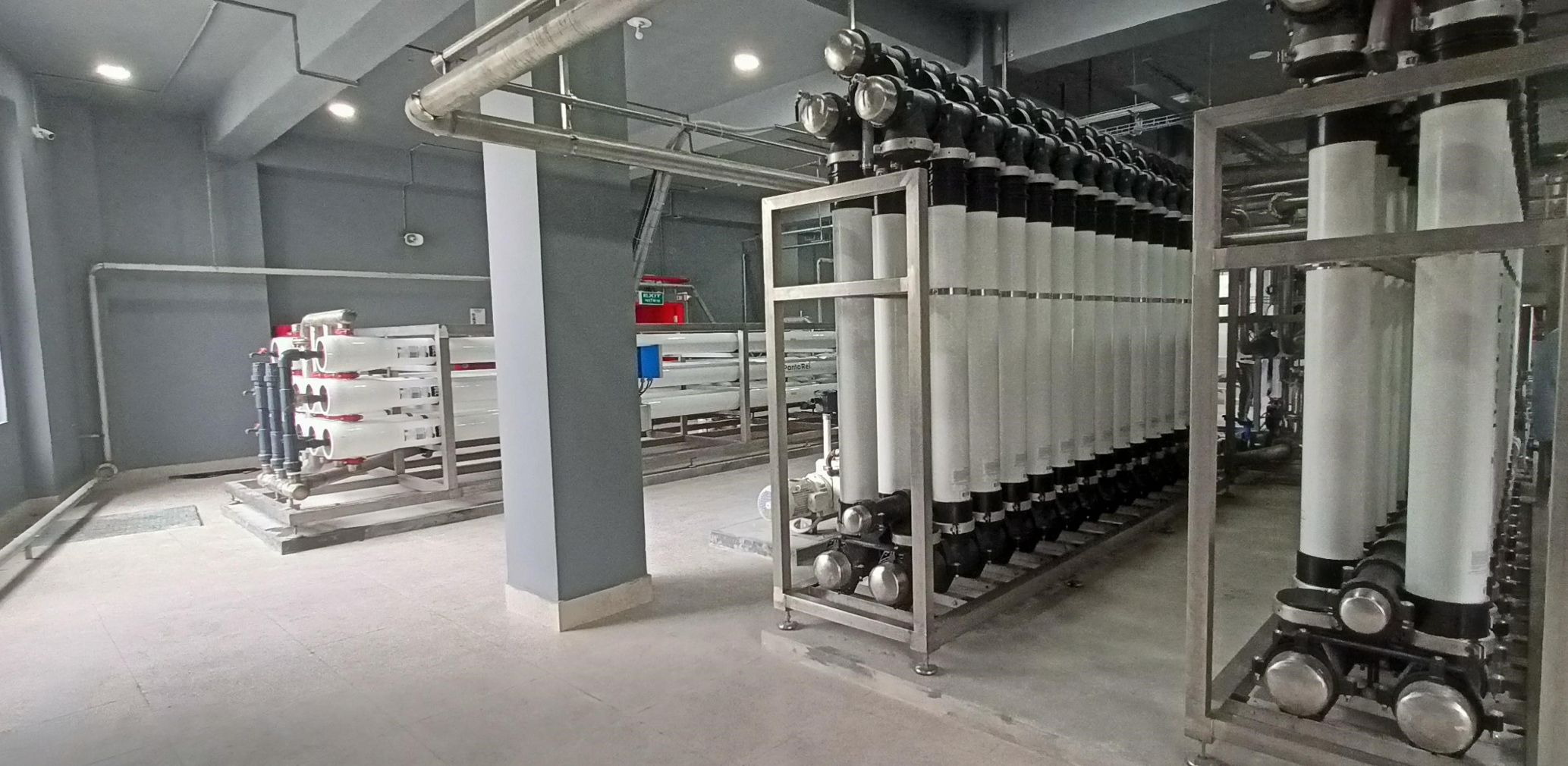About Us
Our Businesses
Investors
Responsibility
Media
Careers
Water is a critical natural resource within the fashion industry, from the irrigation of cotton fields to the dyeing and finishing of fabrics and materials.
 A water efficiency project at a supplier factory in Bangladesh, supported by Primark
A water efficiency project at a supplier factory in Bangladesh, supported by Primark
Primark joined the Alliance for Water Stewardship (AWS) as a funding member in 2021, supporting its approach to improve the use of water resources and its commitment to adopt and promote a universal water stewardship framework: the AWS Standard. The AWS sets out five key outcomes associated with good water stewardship: sustainable water balance, good water quality status, healthy status of freshwater ecosystems, improved water governance, and Water Sanitation and Hygiene (WASH) for all.
Primark’s approach to water stewardship aims to enhance water management practices, reduce product water footprints, and mitigate adverse effects on hydrological systems, ecosystems and human health. The approach includes mapping basin-level risks and evaluating operational water dependencies to identify suppliers and basins most vulnerable to water-related challenges. Primark recognises that climate change, increasing global demand for freshwater, and the rising levels of global pollution are putting additional pressure on already scarce water resources. Water quality and quantity risks are a key focus, and Primark aims to minimise these risks by prioritising basins with the greatest opportunities for impact.
The approach includes three focus areas for water management: product-based, site-based and basin level.
For its product-based approach, Primark aims to reduce the water footprint of products sold in the UK by 30% by 2030, in line with its commitment to WRAP’s (Waste and Resources Action Programme) UK Textiles Pact. Primark takes into account its entire value chain from cotton cultivation to consumer use.
In the calendar year 2024, Primark’s water footprint per tonne of products sold in the UK1 decreased by 22% against its 2019 baseline. This intensity reduction is driven by a combination of more sustainable materials use and supplier engagement on production practices.
For its site-based approach, Primark works with suppliers to reduce their water footprint, improve water quality and reuse wastewater.
Primark conducts an annual water footprint assessment of its value chain. The assessment has identified wet processing factories and cotton cultivation stages as the most dependent on freshwater. It also provides insights into the water footprint of the materials used in its products.This information is being used to develop internal measures aimed at increasing the adoption of more sustainable materials.
By 2025, Primark had over 100 factories engaged in resource efficiency programmes across key sourcing regions including Bangladesh, India and China. Some of these programmes focus specifically on water while others take a holistic approach to energy, water and chemicals management as a part of the Primark Resource Efficiency Programme. Through these programmes, Primark has identified a total of approximately 880,000m3 of water savings through improvement actions which are being implemented by the supported factories.
In 2025, Primark also began to incorporate supply chain water management practices into its supplier evaluation scorecard using the three criteria below to assess efforts to reduce water footprint. As of July 2025, of the wet processing factories engaged in resource efficiency programmes:
Primark is also piloting collaborative projects that apply innovative water management practices in key sourcing regions. One such initiative focuses on Bangladesh’s textile industry, where the business has trialled advanced wastewater recycling and pollution control measures. Please read more in the case study below.
Primark identifies water-stressed basins using tools such as WWF’s Water Risk Filter and WRI Aqueduct’s screening tool, which assess water availability, quality and access. In these water-stressed areas, Primark collaborates with suppliers, other brands and governing bodies to address shared water challenges.
Beyond reducing its water footprint, Primark is involved in broader water stewardship initiatives to address shared challenges. A key part of this approach is identifying priority basins where climate-related water risks intersect with its suppliers’ operational dependency on freshwater. Ten priority basins have been identified and Primark is committed to supporting catchment-scale projects in these regions.
The membership of AWS is integral to this approach, incorporating community engagement, biodiversity and governance considerations to address water challenges holistically. Primark has engaged with 20 suppliers in AWS programmes across three priority basins in China, India and Bangladesh.
To ensure the business is contributing towards basin-level resilience, Primark has aligned its priority basins within its supply chains with those identified by the UN’s Water Resilience Coalition, which has identified the world’s 100 priority basins for collective action, enabling the business to collaborate and scale impact with other water dependent stakeholders. In 2024 Primark joined the CEO Water Mandate, which is a commitment to take action within the priority basins that also intersect with Primark’s water footprint.
1.Reporting against WRAP’s UK Textiles Pact.
Chemistry is crucial to the creation of many components used in Primark’s products. It presents opportunities to enhance product performance, safety and our environmental footprint, while being essential in the material processing phase. In textiles and leather, the majority of chemicals are applied during the wet processing stage, which includes dyeing, printing, bleaching, tanning and washing.
Primark’s Restricted Substance List (RSL) was updated in 2024 to align with the AFIRM Group’s1 2024 RSL and continues to include, at a minimum, the Zero Discharge of Hazardous Chemicals (ZDHC) Manufacturing Restricted Substances List.
Primark is a board member of the ZDHC Foundation, reinforcing its commitment to chemical management. In 2025, Primark also joined the ZDHC Leaders of the Advisory Groups, which were established to foster dialogue across the value chain and includes representatives from brands, wet processors, chemical suppliers and service providers.
Primark continues to carry out an annual assessment of its chemical management programme, evaluated by KPMG. In recognition of its ongoing progress and leadership in sustainable chemistry, Primark was again rated at the second-highest level, Accelerator, in the ZDHC Supplier to Zero programme.
In calendar year 2024, Primark made continued progress in ZDHC Performance:
To further enhance data visibility, Primark deployed the CleanChain Compass Dashboard to improve monitoring and analytics of ZDHC data. Primark has also piloted chemical inventory software at non-wet processing tier one factories, broadening data collection beyond ZDHC scope processes. Additionally, new chemistry criteria were introduced into Primark’s Technical Audit pilot, and chemistry KPIs for InCheck and ClearStream reporting have been rolled out through the Vendor Scorecard to evaluate suppliers.
Primark remains committed to building supplier capability and advancing safe chemical usage across its supply chain:
Recognising their interconnectedness, Primark’s chemistry and water programmes have developed a joint strategy to prioritise and align activities through the new Cleaner Water Programme.
Primark is actively working with ZDHC and industry partners to develop collaborative approaches for implementing more sustainable chemistry in wastewater, with a focus on delivering co-benefits such as increased energy and water efficiency alongside improved chemical performance.
Primark also piloted the Apparel Impact Institute’s Clean by Design Chemistry and Wastewater Programme at three facilities in Bangladesh, which concluded with measurable improvements across chemicals usage, energy consumption and water withdrawal.
1.The Apparel and Footwear International RSL Management (AFIRM) Group.
EDITOR NOTE:
This is the modal area for the above carousel. Please be careful when copying this to UAT or PROD. It would be best to include Cian in these movements. The carousel above has buttons which have ID tags which open the below containers. Be careful to maintain the ID tags.
Addressing water pollution in supply chains requires a holistic and regionally informed approach. In many of the locations where Primark sources products, untreated or poorly managed waste water can have serious consequences for people, biodiversity and local ecosystems. Water quality challenges vary by region. For example, high salinity and dissolved solids in parts of India, or elevated levels of biological and chemical oxygen demand in surface water in Bangladesh. These localised risks make it critical to prioritise interventions that are both appropriate and impactful.
At the same time, Primark must respond to increasing regulatory expectations, including alignment with ZDHC guidelines. The Cleaner Water Programme was established to address these needs by focusing on water quality from multiple angles: the quality of water inputs, chemical management, wastewater treatment and monitoring.
In 2024, Primark advanced its Cleaner Water Programme by addressing four key focus areas. Firstly, the business began using WWF’s Water Risk Filter to assess the quality of water inputs and identify high-risk locations. This tool allows Primark to evaluate river basins based on water quality indicators, enabling targeted and data-driven action.
Secondly, the programme worked closely with the chemical management team to restrict harmful substances and prevent pollutants from entering water systems in the first place. This complements efforts already underway through Primark’s alignment with ZDHC and wider chemical compliance initiatives.
Primark has also initiated the development of a supplier toolkit to support improved effluent treatment. The aim of this work is to help suppliers with a high dependency on water to better understand different treatment technologies and processes, and connect them with relevant solutions and technology providers based on their local context.
Water reuse and recycling are encouraged where appropriate, but the focus is on matching treatment approaches to the specific risks each site presents.
The business also continued its long-term collaboration with Oxford Molecular Biosensors (OMB) to develop new methods for water quality monitoring. This included the completion of a new phase of Integrated Catchment Modelling, focused on the Meghna basin in Dhaka, Bangladesh. By mapping Primark’s supplier factories and analysing discharge data, the model enables Primark to better understand the aggregate impact of its operations in the basin, identify priority interventions and forecast outcomes. The business plans to involve broader stakeholders in the next phase of this work, with the goal of enabling collective, industry-wide action in key basins.
In parallel, a second stream of work with OMB focused on the development of a proprietary biosensor that aggregates water quality indicators into a single ecotoxicity indicator, allowing for a more efficient way to identify water quality risks. This year’s results confirmed the sensor’s potential to offer a more holistic and efficient method for monitoring water quality. Plans are now underway to explore opportunities to pilot the technology in supply chain settings.
In addition, Primark continued its membership of the Microfibre Consortium and the ZDHC Foundation, contributing to broader industry efforts to reduce microplastic pollution and hazardous chemical discharge in waste water.

OMB scientist testing wastewater samples, sent from Primark supplier factories, Bangladesh.
Textiles are the cornerstone of Bangladesh’s economy, but the industry places pressure on the country’s limited water resources. For the past two years, Primark has collaborated on a project aiming to demonstrate the commercial, technical and environmental viability of water reuse and advanced pollution control in the textile industry in Bangladesh. The project is supported by the UK Government as part of its Sustainable Manufacturing and Environmental Pollution (SMEP) programme, as well as by H&M Group, international non-profit organisation WaterAid and water industry specialists.
The project has resulted in the largest wastewater recycling facility of its kind within the textile sector in Bangladesh, which will introduce innovative technologies to reduce micro pollutants and enable wastewater recycling. This project takes a holistic approach to the supply chain, examining how wastewater recycling can be integrated within a factory’s broader resource management, energy, water and chemicals.
Primark has piloted the scheme with its supplier Fakir Knitwear, a factory in Dhaka that supplies Primark and many other brands. Primark found that by integrating innovative technologies such as ultrafiltration and reverse osmosis, the factory could reuse around 50% of its waste water (400,000m₃ a year) and cut its use of chemical softening agents.
This could also lead to GHG emission reductions, as well as reducing the extraction and pollution of fresh water. UN Trade and Development (UNCTAD) estimates that if similar systems were scaled to 25% of waste water treated across the industry, Bangladesh could conserve over 43 million m³ of groundwater annually and cut GHG emissions by 1.5 to 2.6 million tonnes CO₂e.
Primark will work with local stakeholders in both the public and private sectors to share project outcomes and promote improvements in local water governance.
For Primark, collective action also means working through public-private partnerships to influence local policy and access to affordable finance for supplier factories, where related to national water challenges. In 2025, Primark became a member of the National Alliance for Water Reuse and Recycling in Bangladesh. The alliance is formed of government stakeholders, trade associations, brands and finance institutions, and is chaired by the World Bank’s 2030 Water Resource Group. The SMEP project marks the first example of driving national progress on water recycling and advanced water pollution control by the newly formed alliance.

Water filtration equipment installed in a supplier factory in Bangladesh as part of Primark’s wastewater recycling and micro pollution removal project